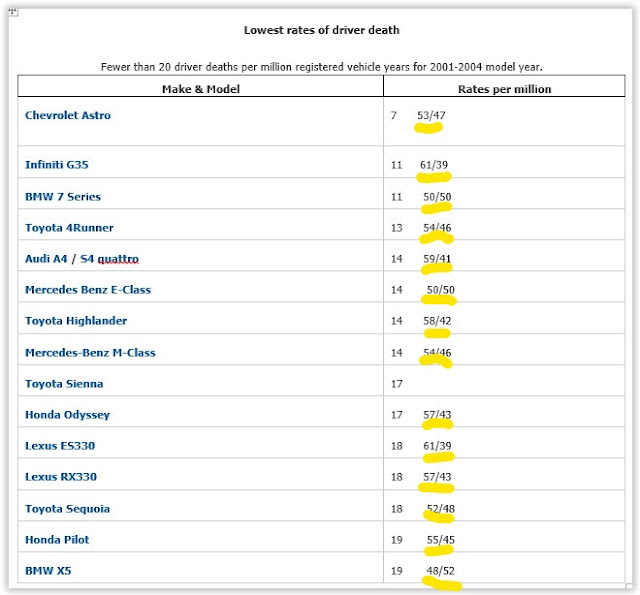Loss of Control Accidents
There is much debate over why so many loss of control
accidents, with many varying opinions from experts and the public.
But what if we take everything out of the
equation but the car? The most common scenario involving loss of control is a
vehicle traveling on an icy road and a front wheel coming into contact with a
ridge of slush or hard snow and the vehicle starting to pivot out of control.
We know the point at which the vehicle will start to pivot and that is when one
front wheel has more traction than both rear wheels combined. 67% front weight
to 33% rear weight.
To understand
how a vehicle will get to this point we need to understand that upon impact
with the slush or snow weight is shifted to the front of the vehicle making the
front of the vehicle heavier and the rear of the vehicle lighter. The
calculation for weight shift is (G force, percentage weight of the car x height
of centre of gravity) divided by the wheelbase. So a half G force on an average
car is (50x20”) /110” =9% weight transfer.
This means a
50/50 balanced vehicle with an encountered force of 50% of the weight of the
vehicle (.5G) will transfer 9% of its weight with a resulting weight ratio of
50+9 / 50-9 or 59/41.
So to reach 67/33 the following forces have to
be present to destabilize vehicles with the following weight ratios;
1. 50/50 --.95G 2. 55/45 --.70G
3. 60/40 --.42G 4. 63/37 --.26G
5. 64/36 --.19G 6. 65/35 --.11G
7. 66/34 --.06G
This is a static calculation, not taking into effect wind
or slope of the road surface and the fact that on a front wheel drive, a
slowing force on one front wheel causes a speed up effect on the opposite
wheel. So the force required to destabilize will be less than what is shown.
How does this translate to accidents. Here are the lists of vehicles put out by The Institute for Highway Safety , best and worst for 2014 and I have added in the weight ratios.
How does this translate to accidents. Here are the lists of vehicles put out by The Institute for Highway Safety , best and worst for 2014 and I have added in the weight ratios.



Comments
Post a Comment